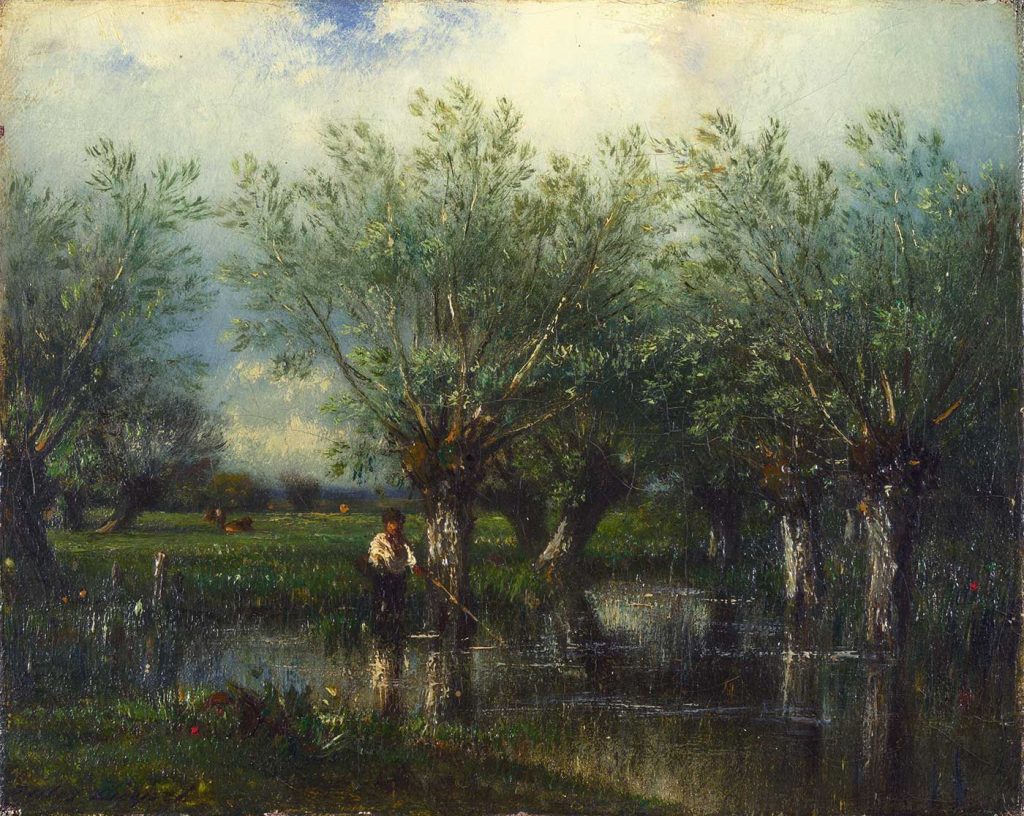
Willows with a Man Fishing by Jules-Louis Dupré was created in 1867. The painting is in National Gallery London. The size of the work is 21,7 x 27,1 cm and is made of oil on canvas.
About the Work
A fisherman stands in the water among the rushes that border either a pond or possibly a river. Willow trees cluster at the water’s edge, the shade they provide contrasting with the sunlit meadow beyond.
This small landscape was most likely painted in the 1850s around the small town of L’Isle-Adam, about 25 kilometres north of Paris. Situated on the left bank of the River Oise, the town is partially built on three islands and is surrounded by streams, ponds and small lakes. Dupré settled there in 1849 and often painted river scenes that include fishermen.
Of all the artists associated with the Barbizon school of landscape painters, Dupré was perhaps the most influenced by English landscape painting. In 1831 he visited England, where he studied the work of Crome, Turner and Constable. Constable’s influence, especially, can be seen in the small touches of paint and use of white highlights that help create the effect of a bright, sunlit day despite the extensive use of dark green in much of the painting. Read more in National Gallery London
About the Artist
Jules Louis Dupré (April 5, 1811 – October 6, 1889) was a French painter, one of the chief members of the Barbizon school of landscape painters. If Corot stands for the lyric and Rousseau for the epic aspect of the poetry of nature, Dupré is the exponent of its tragic and dramatic aspects.
Dupré was born in Nantes. He exhibited first at the Salon in 1831, and three years later was awarded a second-class medal. In the same year, he came to England where he was impressed by the genius of Constable. From then on, he learned how to express movement in nature; and the districts around Southampton and Plymouth, with their wide, unbroken expanses of water, sky and ground, gave him good opportunities for studying the tempestuous motion of storm-clouds and the movement of foliage driven by the wind. He was named an Officer of the French Légion d’honneur in 1848. His daughter Therese-Marthe-Francoise also became a painter. Read more in Wikipedia
Order a reproduction of this work (printed on canvas)
